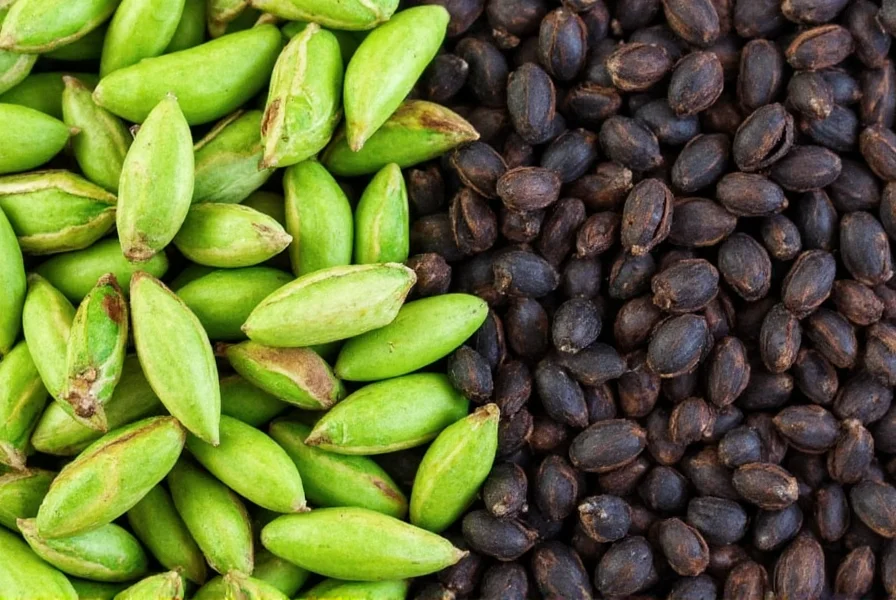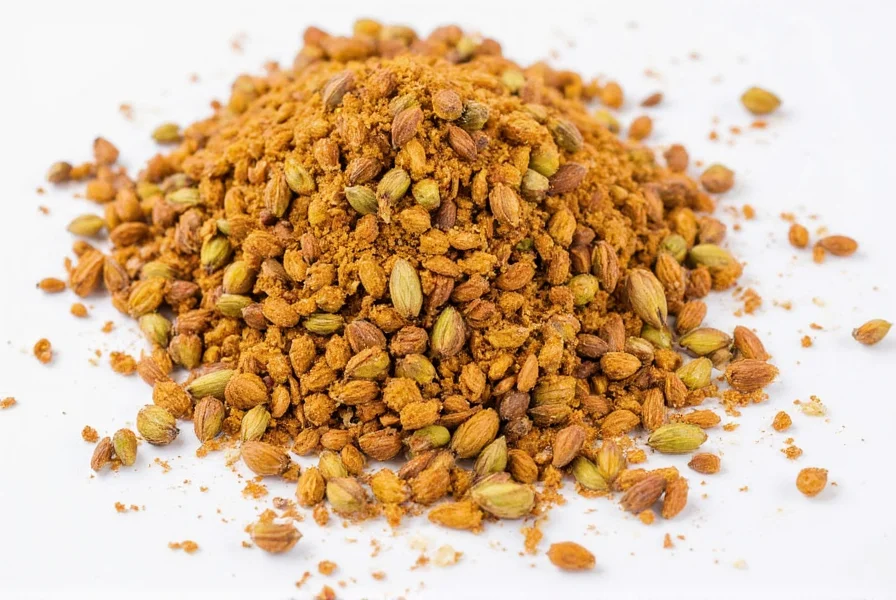Understanding the distinctive cardamom spice flavor profile helps home cooks and professional chefs alike unlock its culinary potential. This ancient spice, native to India's Western Ghats region, has been prized for millennia not just for its taste but for its remarkable ability to transform ordinary dishes into extraordinary culinary experiences.
What Exactly Is Cardamom?
Cardamom (Elettaria cardamomum) belongs to the ginger family and grows as a perennial herb in tropical climates. The spice comes from the plant's small, triangular seed pods containing black seeds. Harvested by hand when nearly ripe, the pods are then dried, preserving their volatile oils that create cardamom's signature what does cardamom taste like experience. Two primary varieties dominate global markets: green cardamom (true cardamom) and black cardamom (Amomum subulatum), each with distinct flavor characteristics.
Decoding Cardamom's Flavor Profile
The cardamom spice flavor defies simple description—it's simultaneously warm and cooling, sweet and pungent, floral and herbal. When you crush a cardamom pod, you'll first notice a bright citrus aroma reminiscent of lemon and orange peel. As the scent develops, subtle floral notes emerge, followed by herbal undertones with hints of mint, eucalyptus, and even camphor in certain varieties.
| Cardamom Variety | Primary Flavor Notes | Best Culinary Applications |
|---|---|---|
| Green Cardamom | Citrus, floral, sweet, herbal | Baking, desserts, light sauces, coffee, tea |
| Black Cardamom | Smoky, camphorous, earthy | Curries, stews, braises, robust meat dishes |
Green vs Black Cardamom: Understanding the Difference
When exploring green cardamom vs black cardamom, the differences extend beyond color. Green cardamom pods are dried naturally or with minimal heat, preserving their delicate flavor compounds. Black cardamom undergoes open-flame drying, which imparts its distinctive smoky character. While green cardamom shines in sweet applications like Scandinavian kardemummabullar and Indian kheer (rice pudding), black cardamom excels in savory dishes like Kashmiri rogan josh and Chinese five-spice powder.
Professional chefs often recommend using green cardamom seeds rather than pre-ground powder for the most vibrant cardamom flavor pairing results. The seeds contain higher concentrations of cineole, the compound responsible for cardamom's characteristic cooling sensation. For optimal flavor release, lightly toast whole pods before grinding or crack them open to expose the seeds when adding to liquid-based recipes.

Culinary Applications Across Global Cuisines
The versatility of cardamom makes it a cornerstone spice in multiple culinary traditions. In Scandinavian baking, it's essential for traditional sweet buns and cookies, where its floral notes complement butter and sugar. Indian cuisine uses cardamom both whole in savory dishes like biryani and ground in desserts like gulab jamun. Middle Eastern coffee often includes cardamom for its aromatic lift, while Arabic luqaimat (sweet dumplings) rely on its distinctive flavor.
When considering how to use cardamom in baking, remember that its volatile oils dissipate quickly when exposed to high heat. For best results in baked goods, add ground cardamom during the final mixing stage rather than incorporating it with dry ingredients at the beginning. In Scandinavian traditions, bakers often combine cardamom with cinnamon and cloves for a complex spice profile that defines their holiday baking.
Perfect Pairings for Cardamom Flavor
Understanding cardamom flavor pairing suggestions elevates your cooking. Cardamom harmonizes beautifully with:
- Fruits: Citrus, pears, apples, and stone fruits
- Dairy: Cream, yogurt, and cheese (particularly in Indian paneer dishes)
- Other spices: Cinnamon, cloves, nutmeg, and ginger
- Sweeteners: Honey, maple syrup, and brown sugar
For savory applications, cardamom complements lamb, chicken, and vegetable dishes with its ability to cut through richness while adding complexity. In sweet applications, it enhances chocolate surprisingly well—try adding a pinch to your next chocolate cake recipe for an unexpected depth of flavor.
Preserving Cardamom's Delicate Flavor
Proper storage is crucial for maintaining the vibrant cardamom spice flavor profile. Whole pods retain their potency for up to a year when stored in an airtight container away from light and heat. Once ground, cardamom loses flavor rapidly—use within 3-6 months for best results. Freezing whole pods can extend freshness for up to two years.
When shopping for cardamom, look for plump, green pods that feel heavy for their size—this indicates high oil content and maximum flavor potential. Avoid pre-ground cardamom when possible, as the grinding process accelerates flavor degradation. For the most authentic cardamom in Indian cuisine experience, many chefs recommend buying whole pods and grinding them fresh using a dedicated spice grinder.
Substitution Options When Cardamom Is Unavailable
While no substitute perfectly replicates cardamom's unique profile, several options work in a pinch for cardamom substitute options:
- A blend of equal parts cinnamon, nutmeg, and coriander
- 4 parts cinnamon to 1 part cloves and 1 part ginger
- Allspice (use at half the amount called for)
Remember that substitutes work best in recipes where cardamom isn't the star flavor. For traditional dishes like Swedish cardamom buns or Indian chai, authentic cardamom delivers irreplaceable complexity.
Frequently Asked Questions
What does cardamom taste like compared to other spices?
Cardamom offers a unique combination of citrusy brightness, floral notes, and herbal complexity that distinguishes it from other spices. Unlike cinnamon's straightforward sweetness or cloves' intense pungency, cardamom provides a multidimensional flavor profile with cooling minty undertones. It shares some citrus notes with coriander but has greater floral complexity, and while it has some warmth like ginger, it lacks ginger's sharp heat.
Can I use green cardamom instead of black cardamom in recipes?
Green and black cardamom serve different culinary purposes and aren't direct substitutes. Green cardamom's bright, floral notes work best in sweet dishes and light sauces, while black cardamom's smoky intensity suits robust savory dishes. In a pinch, use half the amount of green cardamom when substituting for black, or add a tiny pinch of smoked paprika to approximate the smokiness. For authentic cardamom in Scandinavian baking, always use green cardamom.
How much ground cardamom equals one pod?
One green cardamom pod contains approximately 15-20 seeds, which yields about 1/8 teaspoon of ground cardamom. For recipe accuracy, use 1/8 teaspoon ground cardamom per pod called for in recipes. When following traditional cardamom flavor pairing guidelines, remember that freshly ground cardamom from whole pods provides significantly more vibrant flavor than pre-ground spice.
Why does my cardamom taste bitter?
Bitter cardamom usually indicates one of three issues: old or stale spice (cardamom loses its delicate flavor compounds over time), excessive heat during cooking (cardamom's volatile oils break down at high temperatures), or using too much (it's potent—start with small amounts). For optimal cardamom spice flavor profile, use fresh pods, add early in slow-cooked dishes but late in quick-cooking recipes, and measure carefully—1/4 to 1/2 teaspoon typically suffices for most dishes serving 4-6 people.
Is cardamom safe for everyone to consume?
Cardamom is generally safe when consumed in culinary amounts. However, those with gallstone issues should consult a healthcare provider, as cardamom may stimulate bile production. In extremely large medicinal quantities (far beyond culinary use), it could potentially interact with blood thinners. For standard how to use cardamom in baking applications, typical recipe amounts pose no risk to healthy individuals. Pregnant women should stick to normal food quantities rather than medicinal doses.











 浙公网安备
33010002000092号
浙公网安备
33010002000092号 浙B2-20120091-4
浙B2-20120091-4